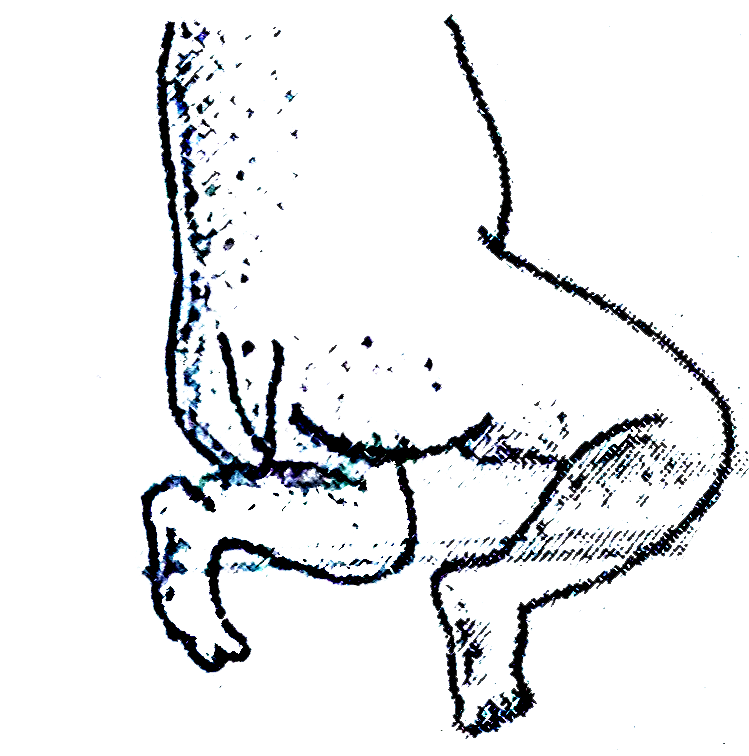Identify the vestigial organ in human body.
Coccyx
Nictitating membrane of eye
Ear muscles
All the above
Step-by-Step Solution:
1. Understanding Vestigial Organs: Vestigial organs are parts of the body that have lost their original function through the course of evolution. They may have been useful in our ancestors but are no longer functional in the current species.
2. Analyzing the Options:
- Option 1: Coccyx: The coccyx, or tailbone, is a remnant of a tail that was present in our primate ancestors. It serves no significant function in modern humans.
- Option 2: Nictitating Membrane of the Eye: This is a small fold of tissue in the corner of the eye. In some animals, it serves to protect the eye and keep it moist, but in humans, it is largely non-functional.
- Option 3: Ear Muscles: Humans have muscles around the ear that can move the ear slightly. However, these muscles are not used for any significant purpose in humans, unlike in some animals that can rotate their ears to better hear sounds.
- Option 4: All of the Above: Since all the listed options (coccyx, nictitating membrane, and ear muscles) are considered vestigial organs, this option suggests that all are correct.
3. Conclusion: Based on the analysis, the correct answer is Option 4: All of the Above. All the listed organs are vestigial in humans.
- Option 1: Coccyx: The coccyx, or tailbone, is a remnant of a tail that was present in our primate ancestors. It serves no significant function in modern humans.
- Option 2: Nictitating Membrane of the Eye: This is a small fold of tissue in the corner of the eye. In some animals, it serves to protect the eye and keep it moist, but in humans, it is largely non-functional.
- Option 3: Ear Muscles: Humans have muscles around the ear that can move the ear slightly. However, these muscles are not used for any significant purpose in humans, unlike in some animals that can rotate their ears to better hear sounds.
- Option 4: All of the Above: Since all the listed options (coccyx, nictitating membrane, and ear muscles) are considered vestigial organs, this option suggests that all are correct.
Topper's Solved these Questions
- BOOK - PEARSON IIT JEE FOUNDATIONCHAPTER - EVOLUTIONEXERCISE - ASSERTIONS AND REASONS8videos
EVOLUTION
- BOOK - PEARSON IIT JEE FOUNDATIONCHAPTER - ECOLOGYEXERCISE - QUICK RECAP3videos
ECOLOGY
- BOOK - PEARSON IIT JEE FOUNDATIONCHAPTER - LIFE PROCESSES IN HUMAN BEING-I (DIGESTIVE AND EXCRETORY SYSTEMS)EXERCISE - ASSESSMENT TESTS (ANSWER THE QUESTIONS)7videos
LIFE PROCESSES IN HUMAN BEING-I (DIGESTIVE AND EXCRETORY SYSTEMS)
Similar Questions
Knowledge Check
- Question 1 - Select One
A vestigial organ in human is
AEar pinnaBNictitating membraneCMammary glands in malesDKnee bone. - Question 2 - Select One
A vestigial organ in man is
AMammary glandBPelvic glandCVermiform appendixDSebaceous glands. - Question 3 - Select One
A vestigial organ of human is
AEar pinnaBNictitating membraneCKnee boneDHand
Vestigial Organs
View SolutionDefine vestigial organs. Write names of some vestigial organs in human body and write the names of those animals in whom same organs are functional.
View SolutionDefine vestigial organs. Write name of some vestigial organs in human body and write the names of those animals in whom same organs are functional.
View SolutionDefine vestigial organs. Write names of some vestigial organs in human body and write the names of those animals in whom same organs are functional.
View SolutionVestigial organs in human beings :
View Solution


